Changing Times
As seen in the 1950's, the portayal of women in the media correlated with the way women presented themselves through clothing. The 1960's, an era heavily associated with protest and rebellion, completely transformed women's fashion.
INDEPENDENCE LIKE NEVER BEFORE
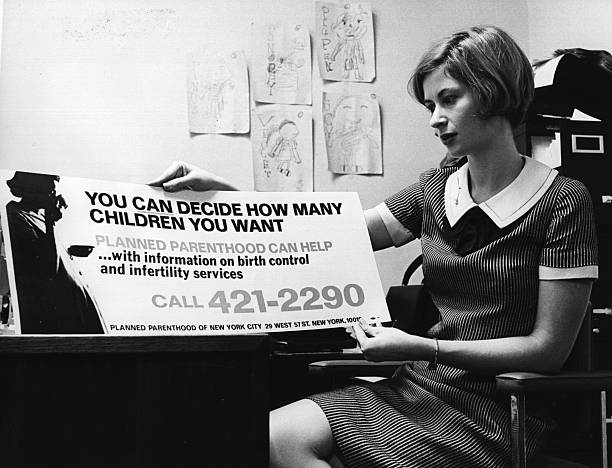
The Women's Right's movement of the 1960's drastically contrasted concepts of the 1950's. The Civil Right's Movement brought equal opportunity for the opressed, which means women could have the ability to provide for themselves financially. In addition to increased job opportunity, the birth control
pill gave women freedom and control over their own bodies.
TWIGGY
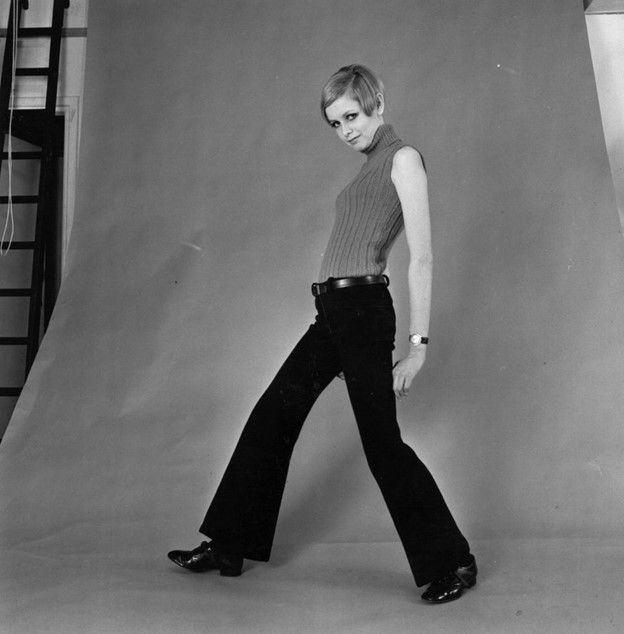
Source: Express Newspaper, Twiggy at Work, 1966, Hulton Archives https://www.gettyimages.com/detail/news-photo/english-model-twiggy-born-lesley-hornby-modelling-flared-news-photo/2629594?adppopup=true
Twiggy, who did not conform to feminine standards, had short hair, and a boyish, thin body type. This was drastically different from the tight hourglass, meticulously kept styles of the 1950's.“There was something quite transgressive about her look […] which was interesting to teenage girls that didn’t conform to traditional looks in a post Rita Hayworth, Marilyn Monroe era” (Paul Gorman). Twiggy’s androgenous, non-sexualized display of fashion helped communicate the concept that women could be themselves without appealing to a certain role. This concept was pushed even further when the young women began incorporating rebellion into their appearance.
TWIGGY AND THE SIXTIES- As one of the most well-known fashion models in the 60s, Twiggy had a tremendous influence on the fashion industry. She was a key communicator of individualistic ideas during the Swinging Sixties.
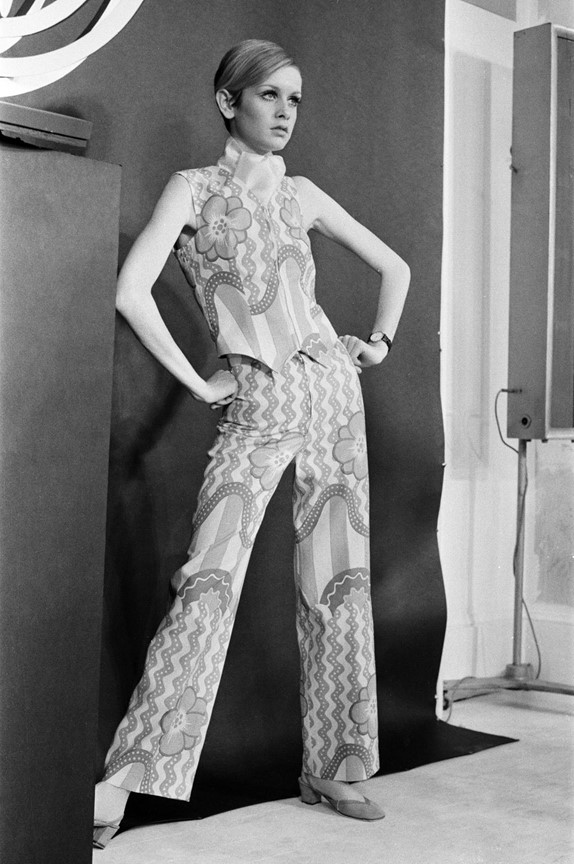
Source: Mirrorpix, Twiggy 1967, 1967, Mirrorpix https://www.gettyimages.com/detail/news-photo/twiggy-launches-new-collection-the-twiggy-look-collection-news-photo/912521902?adppopup=true
THE MINISKIRT
THE MINISKIRT- was an essential element of rebellion in fashion.
The miniskirt, a skirt that hung above the knees, was highly controversial in that time period. It was exceedingly significant, since it had been solely popularized by teenage girls. Mary Quant, the inventor of the iconic fashion piece, quoted, “It wasn’t me or Courrèges who invented the miniskirt anyway—it was the girls in the street who did it.” Although the miniskirt was loved by young women, high fashion brands and older generations hated it.
"Disgusting," Coco Chanel called the miniskirt.
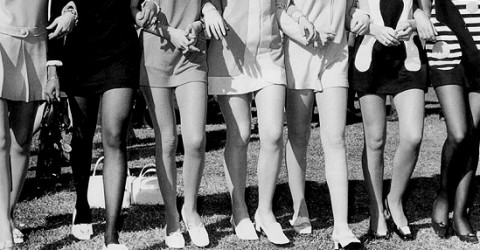
"Never in the history of fashion has so little material been raised so high to reveal so much that needs to be covered up so badly." Cecil Beaton, a high fashion photographer.

Figure 2 Larry Ellis. Miniskirts are Forever (1966). Hulton Archive, Paris, France
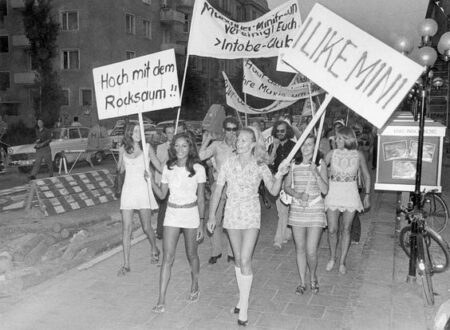
Young women ignored the criticism and even protested the unfair treatment of the piece they adored so much outside of the headquarters of a major designer. The miniskirt was truly a turning point in women's fashion as young women used it to communicate their liberation. They made the world understand that they were no longer tools, pawns, nor objects using the power of fashion.
"The image of a woman was beginning to dramatically shift from being a wife and mother to a young, single, carefree girl proud of her sexuality and confident with her power. The miniskirt would express, and serve as a tool for this growing woman's movement."- Eva Čavojcová